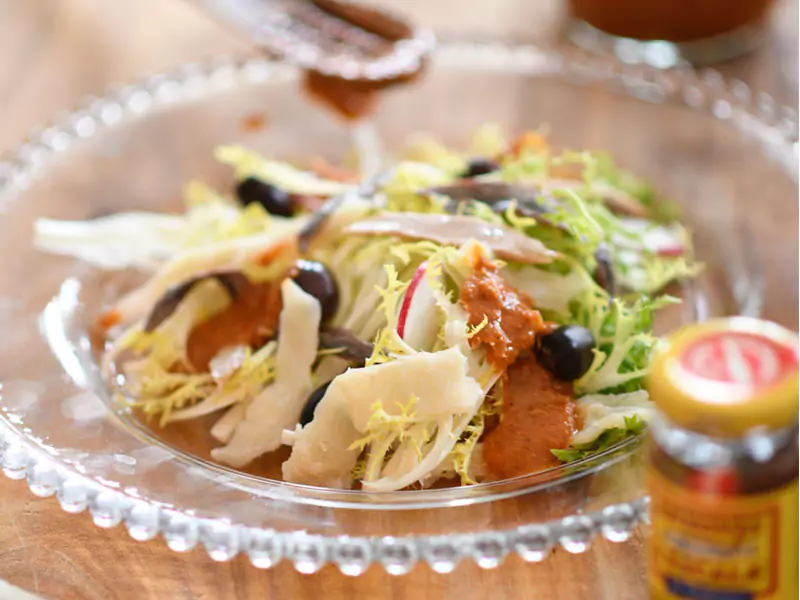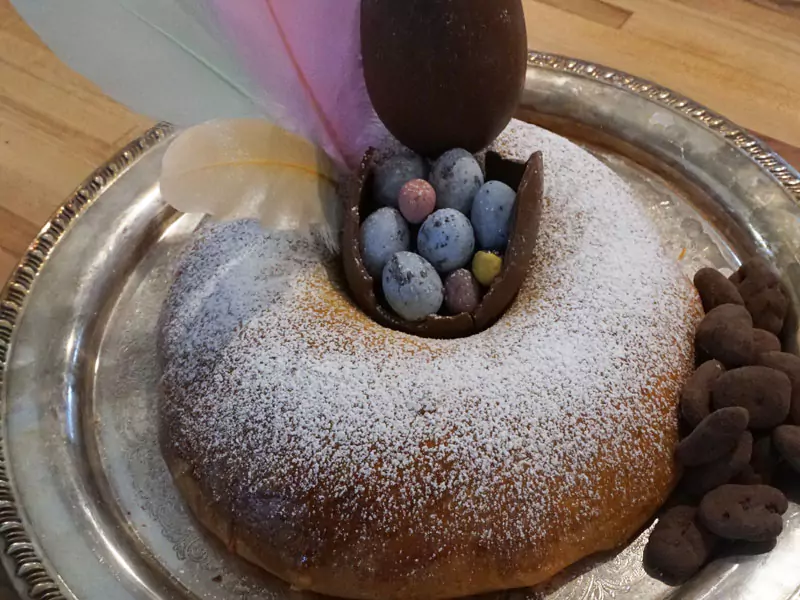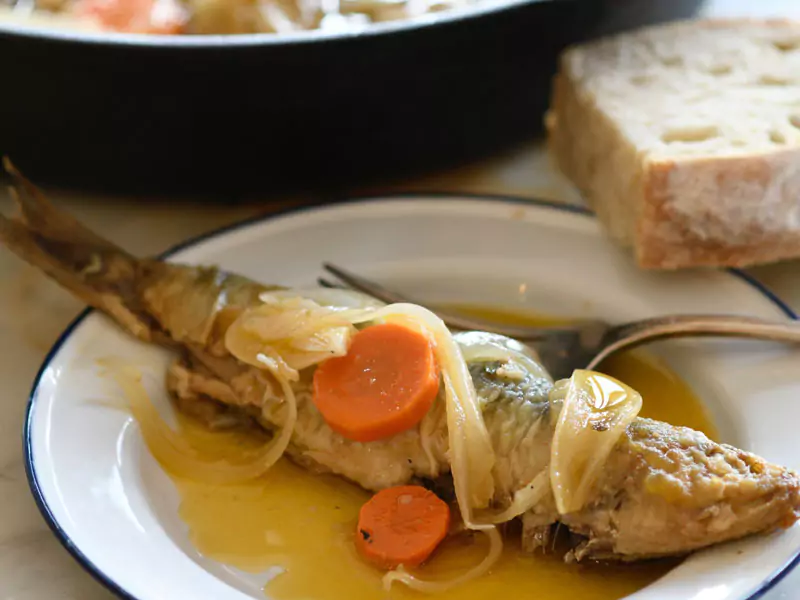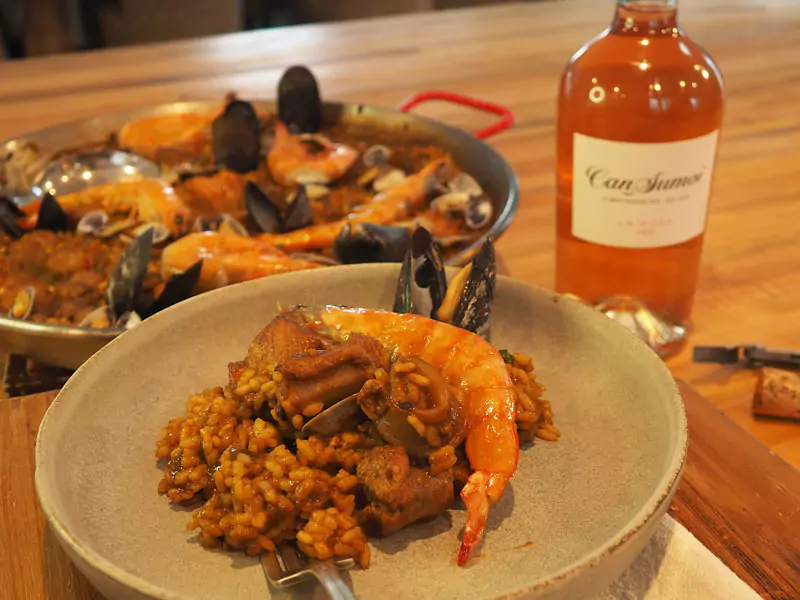The word xató describes a salad made with frisée greens dressed in a romesco-like winter sauce that’s made with dried, locally-sourced ingredients. It’s a sauce that also goes great with fish.
XATÓ FROM GARRAF AND PENEDÈS
While we know that xató was first eaten in the Garraf and Penedès regions, it’s still unclear which municipality can definitively claim the salad as its own. There’s no doubt, however, that the best versions are available throughout those regions; in fact, the dish has given rise to a traditional festival there called La Xatonada de Vilanova.
Squabbles over who makes the best xató are commonplace among the neighboring populations of Sitges and Vilanova. To settle the matter, the regions host competitions to see who can prepare the best xató, but it’s a dilemma that will likely never be resolved as all those involved are convinced that their version is best.
The origin of this salad’s name also remains unclear, although a few theories have made the rounds. The first posits that xató takes its name from the word “chateau,” as the plated salad looks similar to a castle or manor.
The second theory holds that the name comes from the moment when farmers and sailors would tap a new wine la bota de vi. In any case, these hypotheses will have to do, as we’ll likely never know the name’s true origins.
TRADITIONS
Since the birth of salt anchovies, women from the town of Escala, called anxoveres, were tasked with removing the heads and tails from the fish, fileting them, then packing them one by one. This process, impeccably carried out by hand, is a trade passed down from mother to daughter, and a still-existing tradition. If you have the chance to visit Escala, you won’t want to miss seeing them in action.



